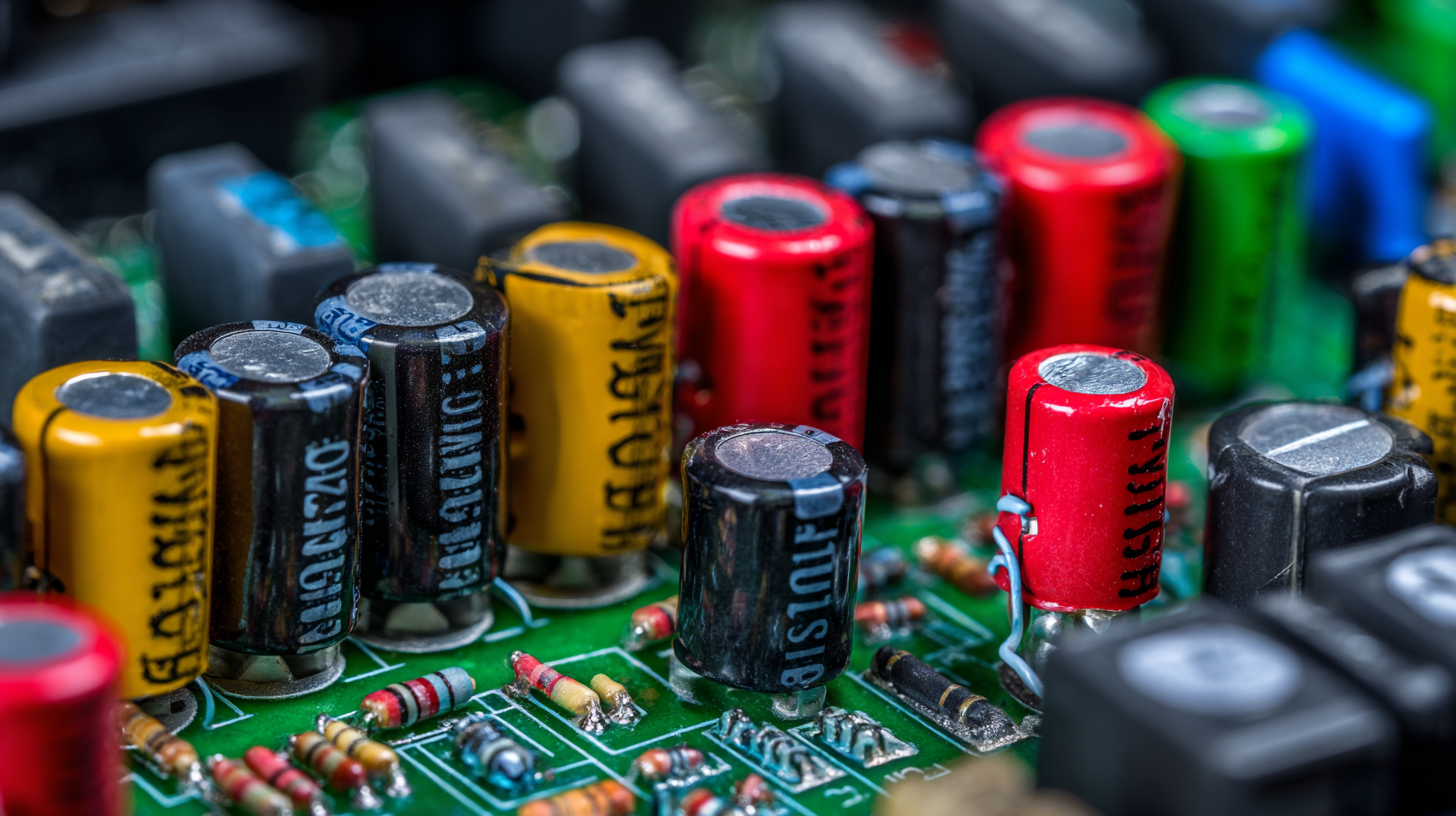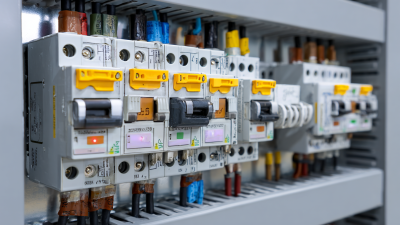Essential Guide to Circuit Protection: Safeguarding Your Electronics from Overload Risks
In today's fast-paced technological landscape, the importance of circuit protection cannot be underestimated. With the global electronics market projected to reach approximately $2.5 trillion by 2025, the risks associated with electrical overloads and faults are escalating, making effective circuit protection essential for safeguarding electronic devices. According to a recent industry report by MarketsandMarkets, the circuit protection market is expected to grow significantly, driven by increasing consumer electronics demand and stringent regulations on electronic safety standards. As devices become more complex and interconnected, the need for robust circuit protection solutions becomes critical to prevent costly damage, data loss, and potential hazards. This essential guide will delve into various strategies and tips for implementing effective circuit protection mechanisms, ensuring the longevity and reliability of your electronic investments.

Understanding Circuit Protection: The Importance of Safeguarding Electronics
In today's technology-driven world, safeguarding electronics from overload risks is paramount. According to a report by the International Electrotechnical Commission (IEC), electrical faults contribute to approximately 17% of all commercial fires globally. This statistic highlights the critical need for effective circuit protection mechanisms. Effective circuit protection not only prevents damage to devices but also enhances their longevity and reliability, ensuring a safe operating environment.
Furthermore, the market for circuit protection devices is projected to grow significantly, reaching an estimated $10 billion by 2025, as reported by MarketsandMarkets. This growth is driven by the increasing integration of electronics in various sectors, from consumer goods to industrial applications. Implementing protective measures such as fuses, circuit breakers, and surge protectors can mitigate risks associated with electrical overloads and surges, making them essential components in modern electronics. As technological advancements continue to evolve, understanding and implementing robust circuit protection strategies is vital for any electronics manufacturer or consumer.

Types of Circuit Protection Devices: A Comprehensive Overview
When it comes to safeguarding your electronics from overload risks, understanding the various types of circuit protection devices is crucial. These devices can be categorized into several types, including fuses, circuit breakers, and transient voltage suppressors. Fuses provide a simple and cost-effective way to prevent excess current from damaging your circuits by melting when the current exceeds a certain threshold. Circuit breakers, on the other hand, can be reset after tripping, making them reusable and more convenient for ongoing protection. Transient voltage suppressors are essential for protecting sensitive electronics from voltage spikes, allowing your devices to operate safely even in unpredictable conditions.

Tips: Always select a circuit protection device that suits the specific characteristics of your electronic setup. For example, if your device experiences rapid cycling of power, a circuit breaker may be a better choice than a fuse due to its reset capability. Additionally, consider installing devices with built-in surge protection if you live in an area prone to electrical storms.
By understanding the strengths and limitations of each type of circuit protection device, you can make informed choices that enhance the longevity and reliability of your electronics. Regularly inspecting these devices can also prevent unexpected failures, keeping your electronic systems running smoothly in the long run.
How to Choose the Right Circuit Protection for Your Applications
Choosing the right circuit protection for your applications is crucial to ensure the longevity and safety of your electronic devices. Circuit protection devices, such as fuses, circuit breakers, and surge protectors, come in various types, each designed to address specific overload risks. When selecting the appropriate protection method, consider the operational environment, the potential for surges, and the characteristics of the circuits involved. Understanding the current ratings and voltage specifications of your devices is essential to match them with the correct protection solution.
Another key factor in selection is the response time of the protection device. Fast-acting devices can prevent damage caused by immediate overloads, while time-delay devices might be preferable in applications with temporary surges that are within the tolerable limits. Additionally, it’s important to take into account the installation space, as some protection devices require more room than others. Assessing all these elements will enable you to safeguard your electronics effectively, minimizing the risks associated with overloads and ensuring reliable performance in your applications.
Common Overload Risks in Electronics and How to Mitigate Them
Overload risks in electronics can lead to significant damage and downtime. One of the most common causes of overload is a surge in electrical current, often due to short circuits or an increase in load that exceeds the device's capacity. This can result in overheating and, in severe cases, can even cause fires. To mitigate these risks, it is crucial to use appropriately rated fuses and circuit breakers that can interrupt excessive current flow before it damages the circuitry.
Another prevalent overload risk arises from voltage spikes, which can occur during lightning strikes or when devices are plugged in or unplugged. To protect against these spikes, surge protectors and voltage regulators should be employed. These devices act as buffers, absorbing excess voltage and ensuring that electronics receive a stable current. Additionally, implementing robust design practices, such as redundancies and thermal management strategies, can further enhance the resilience of electronic systems, safeguarding them against overload incidents.
Essential Guide to Circuit Protection: Safeguarding Your Electronics from Overload Risks
| Common Overload Risks | Description | Mitigation Strategies |
|---|---|---|
| Voltage Spikes | Sudden surges in voltage can damage sensitive components. | Use surge protectors and voltage clamping devices. |
| Overcurrent | Excessive current can cause overheating and component failure. | Implement fuses and circuit breakers to interrupt current flow. |
| Short Circuits | Direct connection can create a path for current with little resistance. | Design circuits with protection diodes and implement ground fault interrupts. |
| Thermal Overload | Excessive heat buildup can lead to component degradation. | Ensure adequate ventilation and use thermal fuses or sensors. |
| Electrostatic Discharge (ESD) | Sudden discharge of static electricity can damage components. | Use ESD protection devices and maintain proper grounding practices. |
Best Practices for Implementing Circuit Protection in Your Designs
Incorporating effective circuit protection measures is paramount for safeguarding electronic devices against overload risks. According to a recent report by MarketsandMarkets, the global circuit protection market is expected to grow from $3.5 billion in 2021 to $5.2 billion by 2026, reflecting the increasing demand for enhanced safety standards in electronics design. Designers are advised to implement best practices such as using fuses or circuit breakers tailored to the specific load requirements of their systems, ensuring quick response times to prevent damage from surges.
Another important consideration is the integration of overvoltage protection components, such as TVS diodes and varistors, which can effectively clamp unwanted spikes in voltage. Research from the Electrical Manufacturers Association shows that 25% of electronic failures can be attributed to overvoltage incidents. By selecting robust protection devices and arranging them strategically within the circuit, engineers can significantly increase the reliability and longevity of their products, ultimately reducing warranty claims and enhancing customer satisfaction. Implementing these best practices not only fortifies designs against electrical hazards but also drives innovation in creating more resilient electronic solutions.
Related Posts
-

How to Choose the Right Circuit Protection Solutions for Your Devices
-

10 Essential Tips for Surge Protection: Protect Your Electronics with 99% Effectiveness!
-

Why Surge Protection is Essential for Your Home and Business Safety
-

Understanding the Challenges of Miniature Circuit Breakers in Modern Electrical Systems
-

Understanding Power Circuit Breakers: The Key to Safe Electrical Systems
-

Exploring the Impact of Motor Protection Technologies at the 138th Canton Fair 2025 in China








